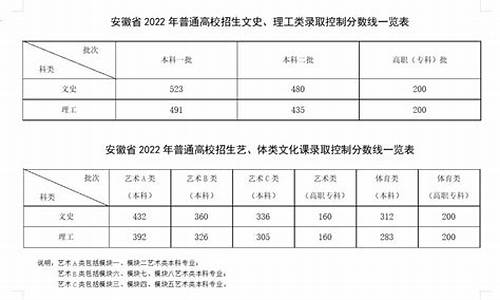您现在的位置是: 首页 > 教育研究 教育研究
高考英语时态选择题及详解_英语时态高考真题
tamoadmin 2024-05-22 人已围观
简介1.高考英语时态怎么考?英语时态知识点高考必考十种时态英语是一般现在时、一般过去时、一般将来时、过去将来时、现在进行时、过去进行时、 将来进行时、现在完成时、过去完成时、现在完成进行时、将来完成时。一般现在时1、概念:经常、反复发生的动作或行为及现在的某种状况。2、时间状语: always, usually, often, sometimes, every week (day, year mont
1.高考英语时态怎么考?英语时态知识点

高考必考十种时态英语是一般现在时、一般过去时、一般将来时、过去将来时、现在进行时、过去进行时、 将来进行时、现在完成时、过去完成时、现在完成进行时、将来完成时。
一般现在时
1、概念:经常、反复发生的动作或行为及现在的某种状况。
2、时间状语: always, usually, often, sometimes, every week (day, year month...), once a week, on Sundays,
3、基本结构:动词 原形(如主语为第三人称单数,动词上要改为第三人称单数形式)
4、否定形式:am/is/are+not;此时态的谓语动词若为行为动词,则在其前加don't,如主语为第三人称单数,则用doesn't,同时还原行为动词。
5、一般疑问句:把be动词放干句首:用助动词do提问,如主语为第三人称单数,则用does,同
时,还原行为动词。
6、例句:It seldom snows here.
He is always ready to help others
Action speaks louder than words.
二、一般过去时:
1、概念:过去某个时间里发生的动作或状态;过去习惯性、经常性的动作、行为。
2、时间状语:ago, yesterday, the day before yesterday, last week,last(year night month.?.) just now, at the age of 5, one day, long long ago, once upon a time, etc.
3、基本结构:be动词;行为动词 的过去式
4.否定形式:was/were+not;在行为动词前加didn't,同时还原行为动词。
5、一般疑问句:was或were放于句首:用助动词do的过去式did 提问,同时还原行为动词。
6、例句:She often came to help us in those days。
I didn't know you were so busy。
高考英语时态怎么考?英语时态知识点
promise是瞬间动词,本不应该用于进行时态。但是在表达某一瞬间动作重复发生的时候,是可以的。老板连续几年总是不断的承诺提高工资,不断地,表明承诺反复发生。再比如:he is jumping for joy.快乐的挑了又跳。不停的跳,重复跳,似乎延续了。记住,语法是活的,有些特殊用法一定要牢记。再比如,瞬间动词表示人为拖延时,一样可以用进行时态。the bus is stopping.缓缓的停下。
1. 一般现在时
①表示客观事实或普通真理(不受时态限制)
The geography teacher told us the earth moves around the sun.
Water boils at 100oC.
②表示现状、性质、状态时多用系动词或状态动词;表示经常或习惯性的动作,多用动作动词,且常与表频率的时间状语连用。
Ice feels cold.
We always care for each other and help each other.
③表示知觉、态度、感情、某种抽象的关系或概念的词常用一般现在时:see、hear、smell、taste、feel、notice、agree、believe、like、hate、want、think、belong seem等。如:
I know what you mean.
Smith owns a car and a house.
All the students here belong to No.1 Middle School.
④在时间、条件状语从句中常用一般现在时代替将来时。但要注意由if 引导的条件状语从句中可以用shall或will表?意愿?,但不表示时态。
If you will accept my invitation and come to our party, my family will be pleased.如果你愿意接受并参加我们的舞会,我的家人会非常高兴。
⑤少数用于表示起止的动词如come、go、leave、arrive、fly、return、start、begin、pen、close、end、stop等常用一般现在时代替将来时,表示一个按规定、计划或安排要发生的动作。当be表示根据时间或事先安排,肯定会出现的状态,只用一般现在时。
The shop closes at 11:00 p.m. every day.
Tomorrow is Wednesday.
2. 一般过去时
①一般过去时的基本用法:表示过去的事情、动作或状态常与表示过去具体的时间状语连用(或有上下文语境暗示);用于表达过去的习惯;表示说话人原来没有料到、想到或希望的事通常用过去式。如:
I met her in the street yesterday.
I once saw the famous star here.
They never drank wine.
I thought the film would be interesting,but it isn?t.
②如果从句中有一个过去的`时间状语,尽管从句中的动作先于主句发生,但从句中的谓语动词连用过去式。如:
He told me he read an interesting novel last night.
③表示两个紧接着发生的动作,常由以下词语连接,用一般过去时。如:but, and, when, as soon as, immediately, the moment, the minute。
The moment she came in, she told me what had happened to her.
He bought a watch but lost it.
④常用一般过去时的句型:
Why didn?t you / I think of that?
I didn?t notice it.
I forgot to tell you I had been there with my brother before.
I didn?t recognize him.
3. 一般将来时
①表示未来的动作或状态常用will / shall + 动词(常与表示将来的时间状语边用如tomorrow、next week等)。
②表示一种趋向或习惯动作。
We?ll die without air or water.
③表示趋向行为的动词如come、go、start、begin、leave等词常用进行时的形式表示将来时。
④be going to与will / shall, be to do, be about to do用法及区别:
be going to 表示现在打算在最近或将来要做某事,这种打算往往经过事先考虑,甚至已做了某种准备;shall / will do表示未事先考虑过,即说话时临时作出的决定。
be going to 表将来,不能用在条件状语从句的主句中;而will则能,表意愿。如:
If it is fine, we?ll go fishing.(正确)
If it is fine, we are going to go fishing.(错误)
be to do sth.表按计划、安排即将发生的动作,还可表示吩咐、命令、禁止,可能性等。
A meeting is to be held at 3:00 o?clock this afternoon.
be about to do sth.表示?即可,就要?,后面不能接时间状语或状语从句。
Autumn harvest is about to start.









